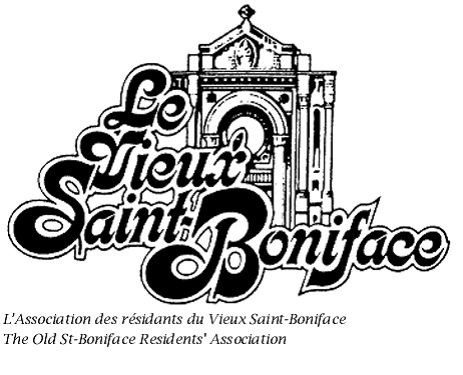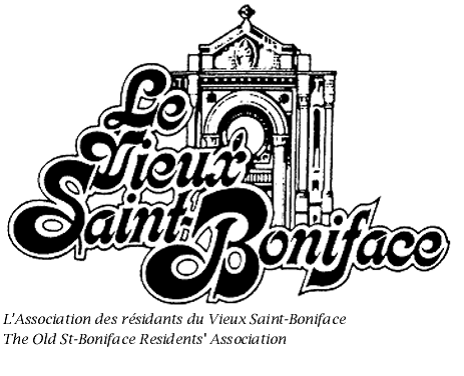
Our Story
History of
l’Association des Residents du Vieux Saint-Boniface
In June 1973, amendments to the National Housing Act created the Neighbourhood Improvement Program (NIP) to improve the housing, municipal infrastructure, and recreational and social facilities of older neighbourhoods. The Program was financed through cost sharing between the Federal, Provincial and Municipal Governments. In December 1975, the City of Winnipeg, the Province of Manitoba and the Government of Canada signed an agreement to spend $4.9 million in an area north of Provencher Boulevard to the CNR High Line and west of Archibald to the Red River. The Provencher Boulevard boundary was extended to Thomas Berry Street in January 1980.
One of the objectives of the NIP in Winnipeg was the meaningful participation of area citizens in the implementation of the Program. From November 1976 to May 1977, steps were taken to organize a NIP Residents Committee. This occurred through the holding of information and election meetings in various parts of the neighbourhood. On May 19, 1977, the first meeting of the North Saint Boniface Residents’ Committee took place. There were 25 elected members. In May 1979, the Residents’ Committee adopted a formal constitution, was incorporated and became known as l’Association des Residants du Vieux Saint-Boniface Inc.
Our Mandate
To develop and maintain a strong community and resident association.
To develop and maintain le Vieux Saint-Boniface (the“area”) as a vibrant residential area:
a) by promoting the existing character of the community;
b) by promoting the historical significance of the area; and
c) by promoting desirable change and development in the area.
2.1 To develop programs and facilities to meet the needs of the young and old citizens of le Vieux Saint-Boniface.
To develop programs and facilities to meet the needs of the citizens of le Vieux Saint-Boniface.
To encourage the development of family units in le Vieux Saint-Boniface through the adoption of suitable policies pertaining to housing, parks and recreation, transportation, industry, commercial and other community services.
To formulate planning proposals which reflect the concerns and the physical/social needs of the whole area.
To ensure that all the residents of the area are being informed of planning proposals, decided projects, and implementation strategies through meetings and/or information handouts or word of mouth.
To ensure that all interested residents are allowed to debate, advise and vote on proposals through meetings or opinion surveys.
Constitution
We are governed by our constitution which has lead us for many years. It is fully detailed below.

History of Saint Boniface
Succeeding cultures of indigenous peoples particularly the Ojibwe lived in the Saint Boniface area for thousands of years before European exploration.
European settlement in Saint Boniface can be traced to 1808, making it one of the oldest settlements in Winnipeg. The Gaboury and Lagimodiere families were the first white settlers to inhabit the area, occupying a homestead at the confluence of the Red and Seine Rivers.
At the invitation of Lord Selkirk, missionaries arrived from Montreal in 1818 and settled on the east bank of the Red River, land granted by Lord Selkirk to the Roman Catholic Church. After his arrival in Saint Boniface, Bishop Norbert Provencher had constructed a house in the winter of 1818, which contained a chapel he named Saint Boniface. The house was later replaced in 1864 by Provencher’s successor, Archbishop Alexandre-Antonin Tache. The Archbishop’s residence is still in use as the archbishop’s residence and is one of the oldest stone buildings in western Canada.
In 1818, Bishop Provencher also built a school to teach Latin and general humanities to local boys. This school later evolved into Saint Boniface College and now Saint Boniface University, making it western Canada’s oldest post-secondary institution. In 1832, Provencher had constructed a church near the site where the Saint Boniface Cathedral now stands.
The Sisters of Charity of Montreal, better know as the Grey Nuns arrived in 1844 and their convent founded in 1847 served as Western Canada’s first hospital, orphanage and seniors’ home and boarding school for girls until 1956. It now houses the Saint Boniface Museum.
Prior to 1850, Swiss-German soldiers who were permitted to homestead the area in return for defending the Red River Settlement largely inhabited the colony. After 1850, the community grew with the influx of Metis, French Canadian fur trappers and traders and their Aboriginal wives, forced to find permanent settlement as the prairie buffalo diminished. Until 1900, the majority of the Saint Boniface population was Metis.
Following 1872, many changes occurred in Saint- Boniface. 1872 saw the arrival of the first train from Eastern Canada via a rail line in the United States having its terminal in Saint Boniface bringing with it some French speaking immigrants from Quebec. The construction of the Canadian Northern Railway in 1900 by passing Saint Boniface dashed the residents’ hopes that maintenance yards and supporting industries would be built on lands now occupied by Whittier Park.
In 1880, the Rural Municipality of Saint Boniface was established. In 1883, the Town of St. Boniface with a population of 600 persons was granted separate legal status. In 1908, Saint Boniface was incorporated as a City. In 1971, Saint Boniface was amalgamated, along with several neighbouring communities into the City of Winnipeg.
The early economy of Saint Boniface was oriented to agriculture. In 1912, the 165-acre Union Stockyards were developed and became the larges livestock exchange in Canada and a centre of the meatpacking and processing industries. In the first half of the 20th century, numerous light and heavy industries were established in the area east of Archibald Street.
From the origin of the first settlement in St. Boniface to the present day, the French culture plays an important role in its culture. Saint Boniface is know as one of the largest French-speaking community outside of Quebec and served as the focal point for Francophone.
The French cultural heritage, the mix of older residential and heavy industrial land uses are some of the factors that shape the issues that the North Saint Boniface Residents’ Association need to address now and in the future.



